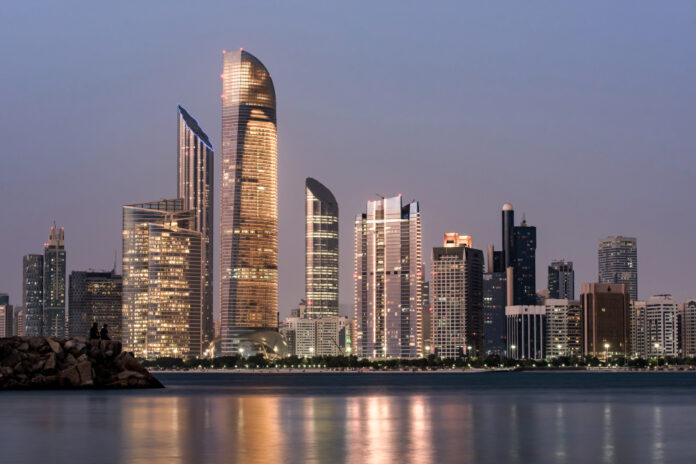Saudi Arabia’s Vision 2030 and reforms drive strong growth, with the World Bank projecting robust economic expansion over the next two years
The economic growth of Saudi Arabia is set to accelerate, with the World Bank projecting a 4.9% rise in the Kingdom’s GDP by 2025. This forecast surpasses the International Monetary Fund’s (IMF) earlier estimate of 4.7%, highlighting Saudi Arabia’s commitment to diversifying its economy beyond oil and boosting non-oil sectors.
Currently, the Kingdom’s GDP is expected to grow by 1.6% this year, laying a strong foundation for further acceleration in 2025. The economic momentum is underpinned by Saudi Arabia’s Vision 2030 initiative, which seeks to modernise the economy through a series of reforms aimed at stimulating private sector growth, enhancing female labour participation, and boosting job creation across multiple industries.
One of the standout achievements driving this growth has been the dramatic rise in female participation in the workforce. Between 2016 and the end of 2023, the proportion of women in the labour force surged from 22% to 34%. This shift aligns with the Kingdom’s broader strategic goals of promoting gender equality and enhancing opportunities for women in various sectors.
Embed from Getty ImagesThe World Bank’s report highlights the crucial role that labour reforms have played in this transformation. By eliminating employment discrimination and expanding job opportunities across industries, the reforms have facilitated an inclusive labour market. The World Bank specifically credited the Saudi government’s reforms in accelerating this process, stating: “Key reforms in labour laws to eliminate employment discrimination, the expansion of job opportunities across various industries, and the emphasis on female labour force participation as part of Vision 2030 have contributed to a significant increase in women’s participation over a relatively short time.”
The Kingdom’s efforts to diversify the economy have not gone unnoticed, especially as it reduces its dependency on oil revenues. Sectors such as tourism, entertainment, technology, and financial services are growing at a rapid pace, providing a solid base for non-oil growth. Saudi Arabia’s diversification strategy has already led to significant socio-economic advancements, helping create a more resilient economy that can withstand global shocks, such as fluctuations in oil prices or geopolitical tensions.
The World Bank’s optimistic outlook comes on the heels of a September report by the global credit rating agency S&P Global. S&P projected Saudi Arabia’s economy would grow by 1.4% in 2024, accelerating to 5.3% in 2025. The report attributed this anticipated growth to the Kingdom’s diversification efforts, with a particular emphasis on the strengthening of the non-oil private sector. S&P also noted that expected rate cuts by the US Federal Reserve could provide a further boost to Saudi Arabia’s economy, attracting increased capital inflows and improving its economic fundamentals.
Looking beyond Saudi Arabia, the World Bank’s latest report offers insights into the broader Middle East and North Africa (MENA) region. The region’s GDP is projected to grow by 2.2% in 2024 and 3.8% in 2025. Within the Gulf Cooperation Council (GCC), the economy is expected to expand by 1.9% in 2024 and 4.2% the following year.
Qatar, for instance, is projected to grow by 2.2% in 2024 and 2.7% in 2025, while the UAE is set for a 3.3% GDP expansion next year, followed by 4.1% in 2025. Bahrain is also expected to show positive growth, with projections of 3.5% in 2024 and 3.3% in 2025. Meanwhile, Oman’s growth is expected to be more modest, with a 0.7% rise in 2024, increasing to 2.7% in 2025.
Kuwait, however, faces a challenging outlook in the short term. The country’s economy is projected to shrink by 1% this year before recovering with a 2.5% growth rate in 2025, according to the World Bank’s forecasts.
Despite the region’s overall growth, the World Bank report also warns of significant economic challenges. The ongoing conflicts in parts of the MENA region remain a major source of uncertainty. The Palestinian territories, for example, are experiencing one of the largest economic contractions on record, with Gaza’s economy shrinking by a staggering 86% in the first half of 2024. Lebanon, too, faces a bleak outlook, with its GDP expected to contract by 1% in 2024.
Nevertheless, the report stresses that peace and stability are essential for sustainable development across the region. “Peace and stability are the foundation of sustainable development,” said Ousmane Dione, vice president of the World Bank for the Middle East and North Africa region. “The World Bank Group remains committed to engaging in conflict-affected areas and supporting the region’s path to recovery and growth.”
As Saudi Arabia continues its transformation under Vision 2030, the Kingdom’s ability to diversify its economy, create jobs, and expand opportunities for its population will be pivotal in shaping its future. With both the World Bank and S&P Global projecting strong growth, Saudi Arabia seems poised for a bright economic future despite the broader challenges faced by the region.
